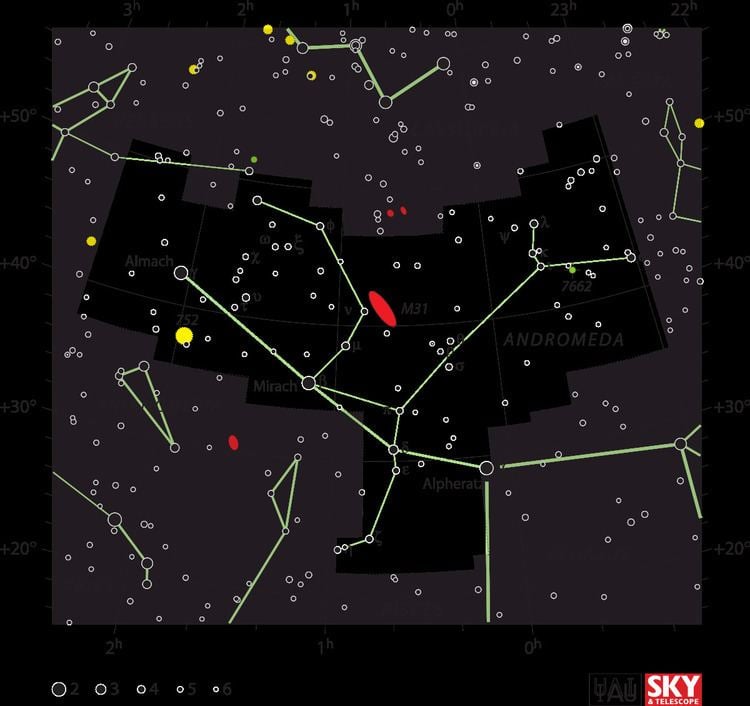Magnitude 3.28 | Orbital period 41 years Apparent magnitude (V) 3.28 | |
 | ||
Similar Mu Andromedae, Eta Andromedae, Epsilon Andromedae, Nu Andromedae, Zeta Andromedae | ||
Delta Andromedae (δ And, δ Andromedae) is a multiple star system in the northern constellation of Andromeda. Based upon parallax measurements, is located at a distance of approximately 105.5 light-years (32.3 parsecs) from the Earth. Apart from its Bayer designation, it was also given the title Delta by Elijah H. Burritt in his star atlas.
In Chinese, 奎宿 (Kuí Sù), meaning Legs (asterism), refers to an asterism consisting of δ Andromedae, η Andromedae, 65 Piscium, ζ Andromedae, ι Piscium, ε Andromedae, π Andromedae, ν Andromedae, μ Andromedae, β Andromedae, σ Piscium, τ Piscium, 91 Piscium, υ Piscium, φ Piscium, χ Piscium and ψ¹ Piscium. Consequently, δ Andromedae itself is known as 奎宿五 (Kuí Su wǔ, English: the Fifth Star of Legs.)
This is a long-period spectroscopic binary with an orbital period of approximately 15,000 days (41 years) and an overall apparent visual magnitude of approximately 3.28. The primary of the spectroscopic binary has a stellar classification of K3 III, indicating that it is a giant star. It most likely evolved from a F-type main sequence star after consuming the hydrogen at its core. The secondary is believed to be relatively faint, as it has not been observed interferometrically. The star has two optical companions, the closest of which may be an orbiting red dwarf of class M3 with a separation of at least 900 astronomical units.
An excess of infrared emission from δ Andromedae suggested that it may be surrounded by a shell of dust. In 2003 it was determined that this is more likely a circumstellar debris disk.
